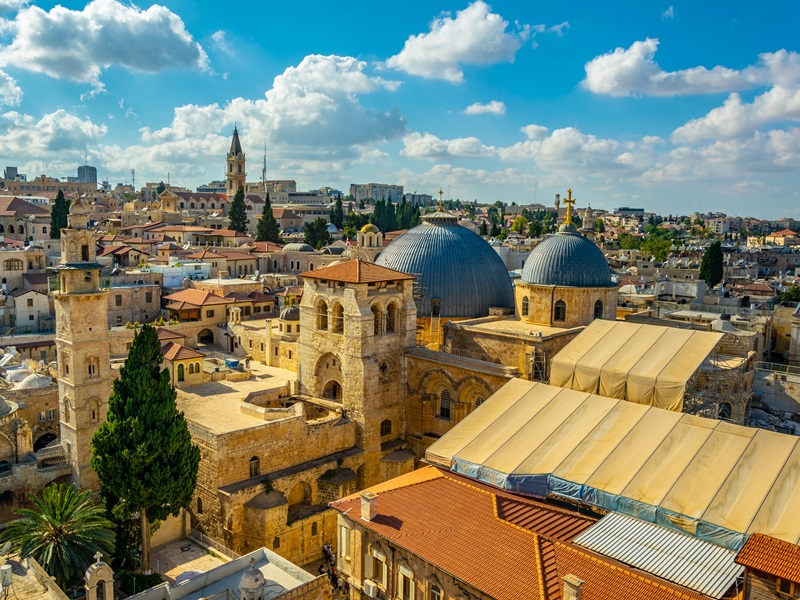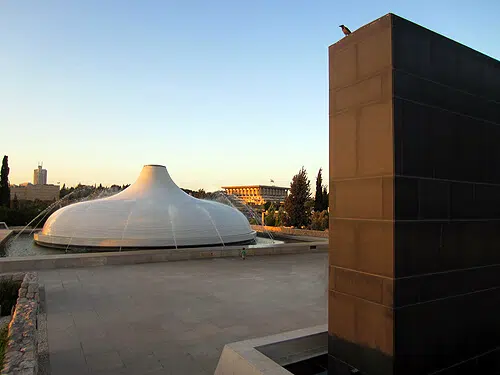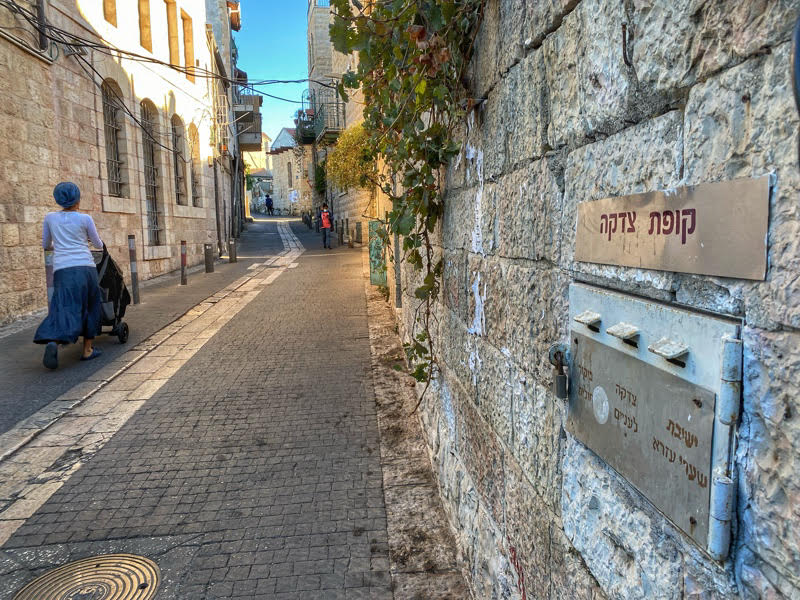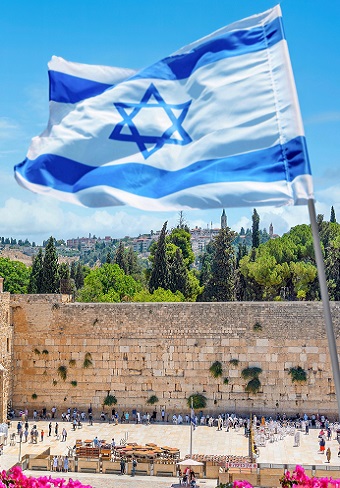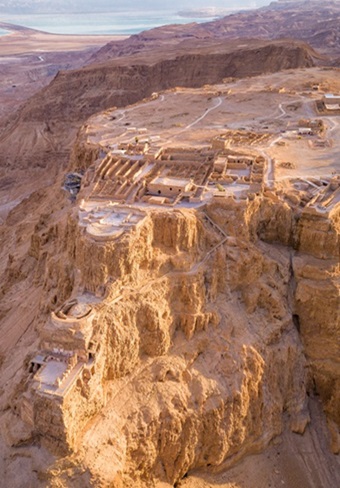Jerusalem’s Jaffa Gate

Designed by the architects of “Suleiman the Magnificant” in the 16th Century, Jaffa Gate is one of the main entryways into the Old City of Jerusalem. The gate comprises a typical medieval L-shaped entryway to slow down oncoming attackers. It was also protected by two heavy doors on both ends. Up to the mid-19th century, Jerusalem’s gates were locked every night. Furthermore 1898, a breach was formed in the wall behind the gate to enable Wilhelm II to make a triumphal entry into the city. The breach is used today for car entry into the old city from the west.
The gate’s name (like Jaffa Road) is based on the overseas traffic to Jerusalem from the west, mainly through the Port of Jaffa. However, most pedestrians entering the old city from the west reach it via the Mamilla Pedestrian Mall.
Jaffa Gate’s Controversial Clock Tower
In the early 20th Century, the Ottomans built a big clock tower above Jaffa gate. However, just 20 years later, the first British governor of Jerusalem considered it to be so ugly that he ordered it to be taken off.
The Inscriptions at Jaffa Gate
When the Jaffa gate was first built, a lengthy inscription was added in Arabic to praise Suleiman the Magnificent for its construction. It stated: “In the name of Allah the merciful and the compassionate, our lord the great sultan, king of the Turks, the Arabs, and the Persians, Suleiman Ben Salim Khan, ordered that this blessed wall be built, may Allah will perpetuate his reign, Year 945 (=to the Muslim Higra)” A similar inscription was also placed in the wall next to the gate.
 After the Six-Day War in 1967, the old city came under the control of the State of Israel. In the 1970s, It led an extensive conservation project of the ancient city’s gates and walls. When completed, an Inscription in Hebrew and Arabic was added beneath the Ottoman one, stating, “On Teveth 10, 5730 (=1970), the fixing of the city walls were completed.” It then adds a short quote from the Book of Nehemiah (4:1) that documents the repair of Jerusalem’s walls and how it got the Samaritans and the Arabs upset. In his wildest dreams, Suleiman the Magnificent probably did not expect this…
After the Six-Day War in 1967, the old city came under the control of the State of Israel. In the 1970s, It led an extensive conservation project of the ancient city’s gates and walls. When completed, an Inscription in Hebrew and Arabic was added beneath the Ottoman one, stating, “On Teveth 10, 5730 (=1970), the fixing of the city walls were completed.” It then adds a short quote from the Book of Nehemiah (4:1) that documents the repair of Jerusalem’s walls and how it got the Samaritans and the Arabs upset. In his wildest dreams, Suleiman the Magnificent probably did not expect this…
Points of Interest Near Jaffa Gate
The courtyard behind Jaffa gate is a colorful combination of souvenir shops and some 19th-century neo-classical buildings. South of the gate is the Medieval citadel of Jerusalem, known today as the Tower of David Museum. Next to the gate, a stairway in the walls leads to the Ramparts walk.
Jaffa gate is also the closest entry into the city to get to the Church of the Holy Sepulchre, which attracts millions of Christian pilgrims on an annual basis.
To fully appreciate the site, we recommend combining it with a guided day tour of Jerusalem.
